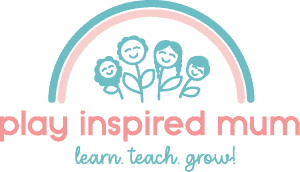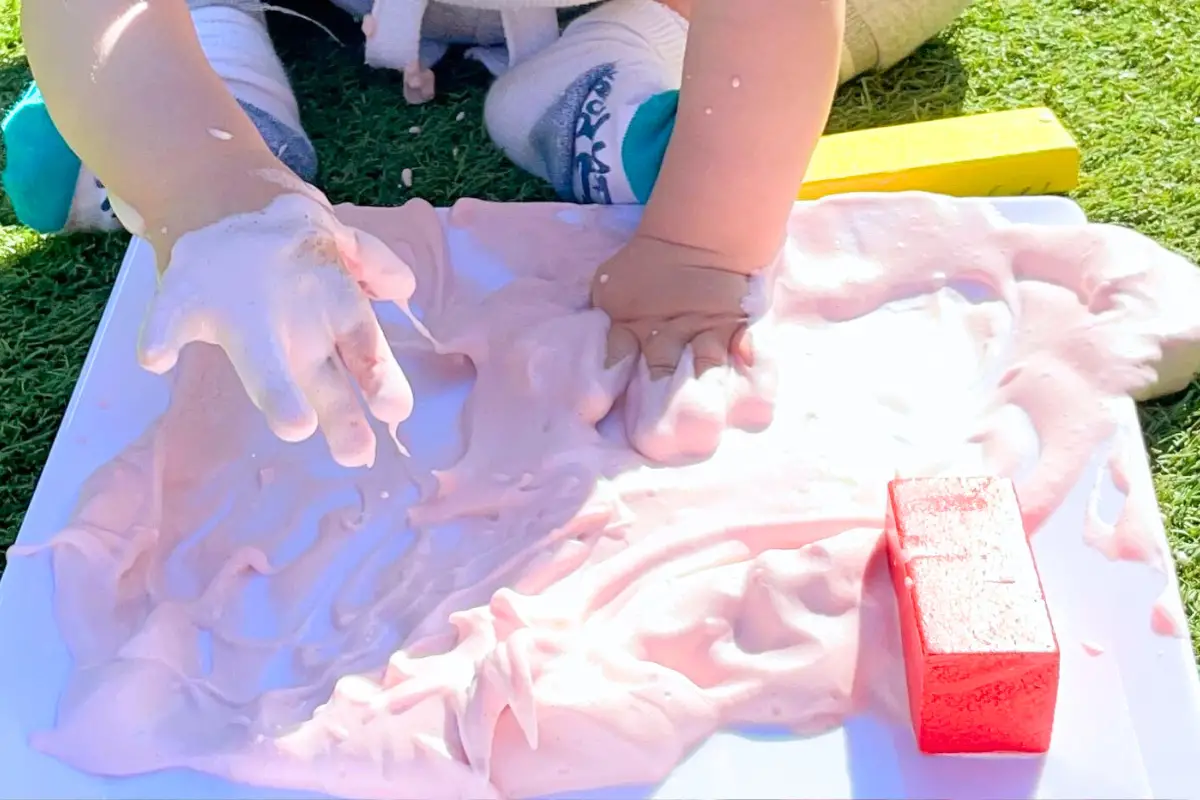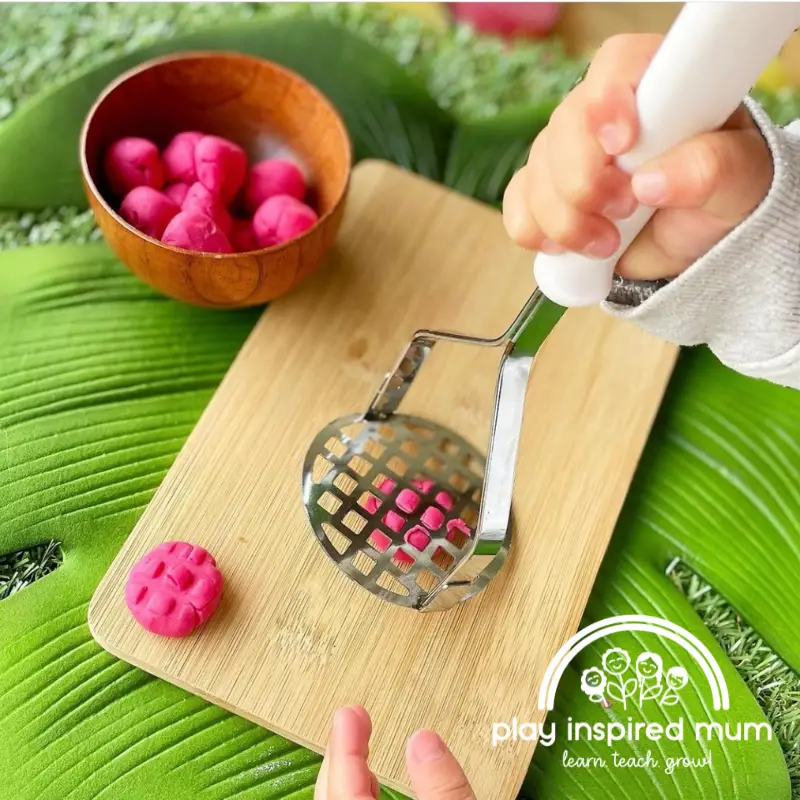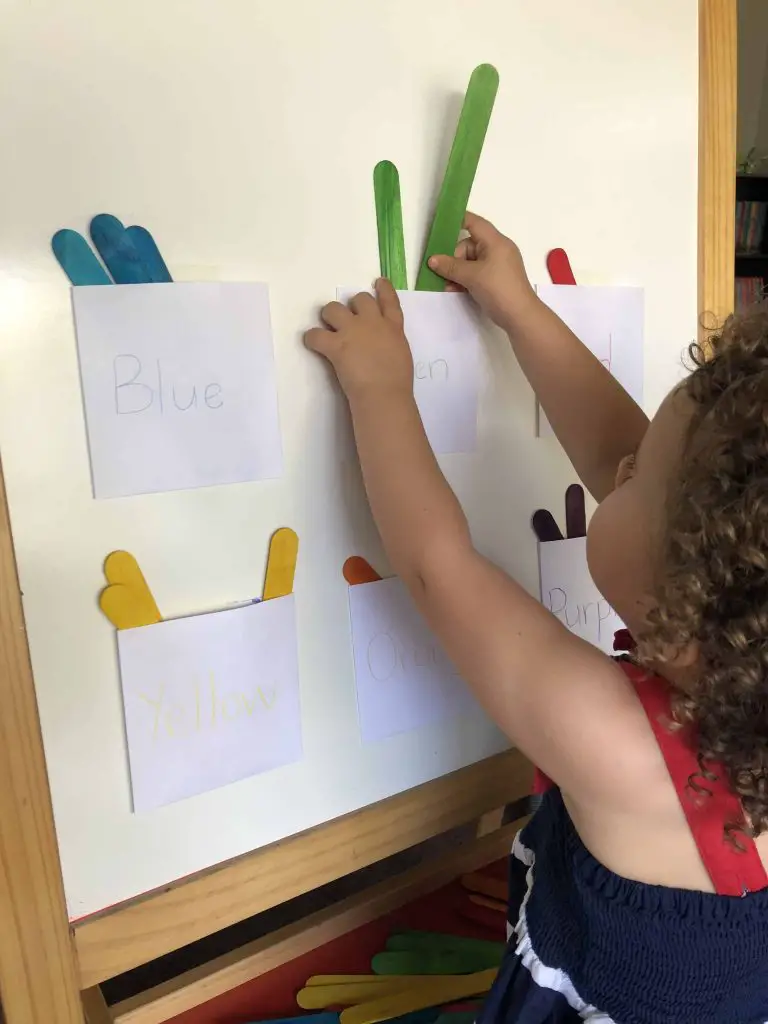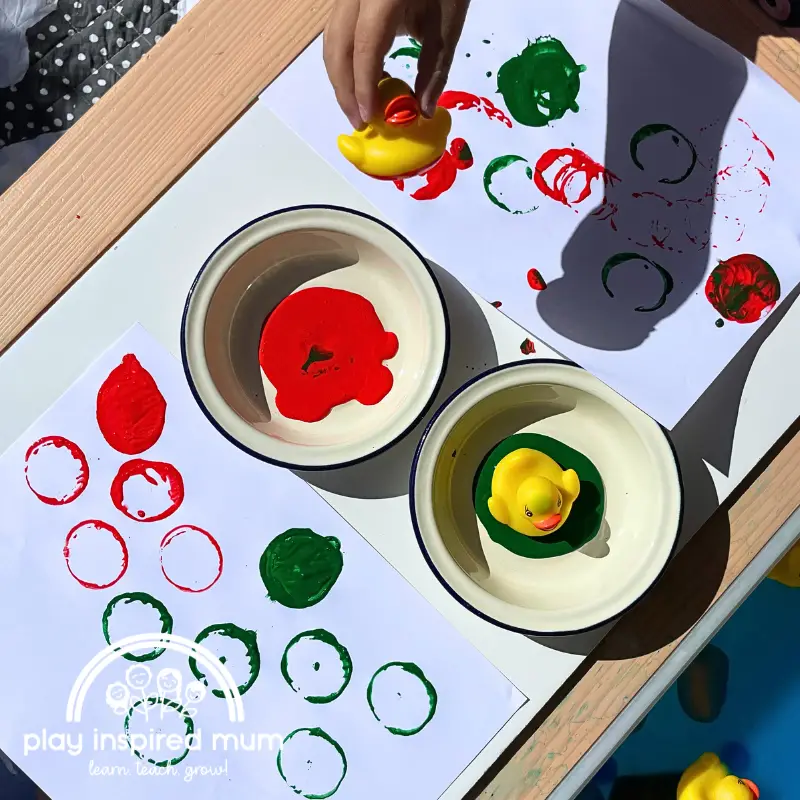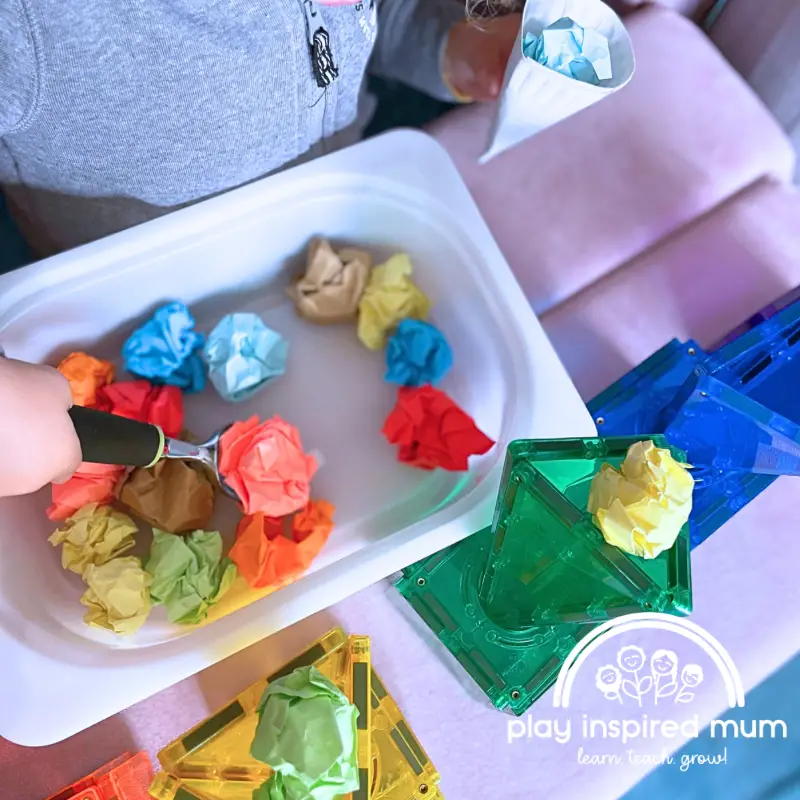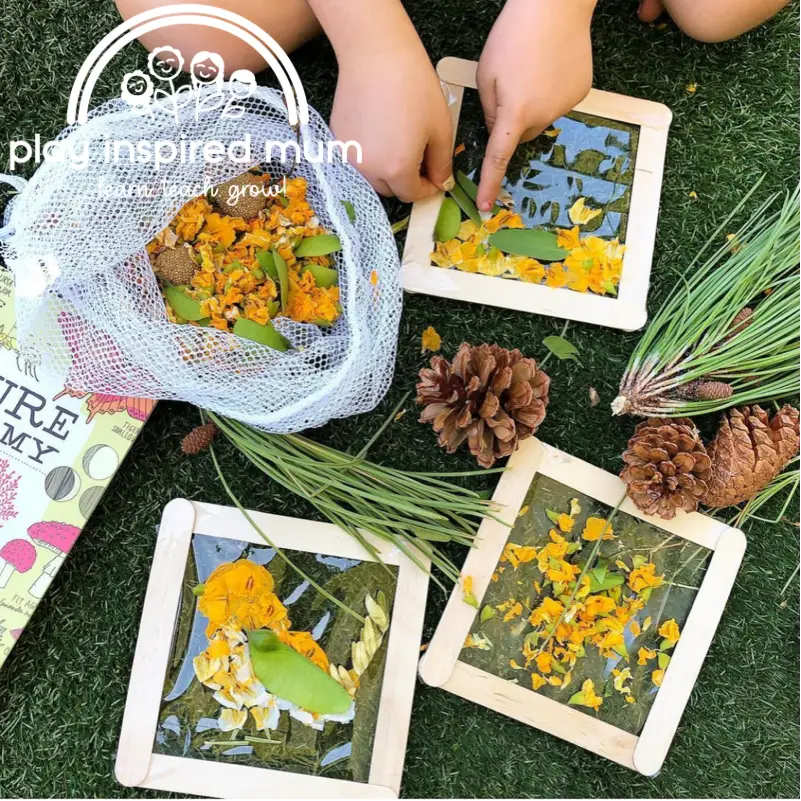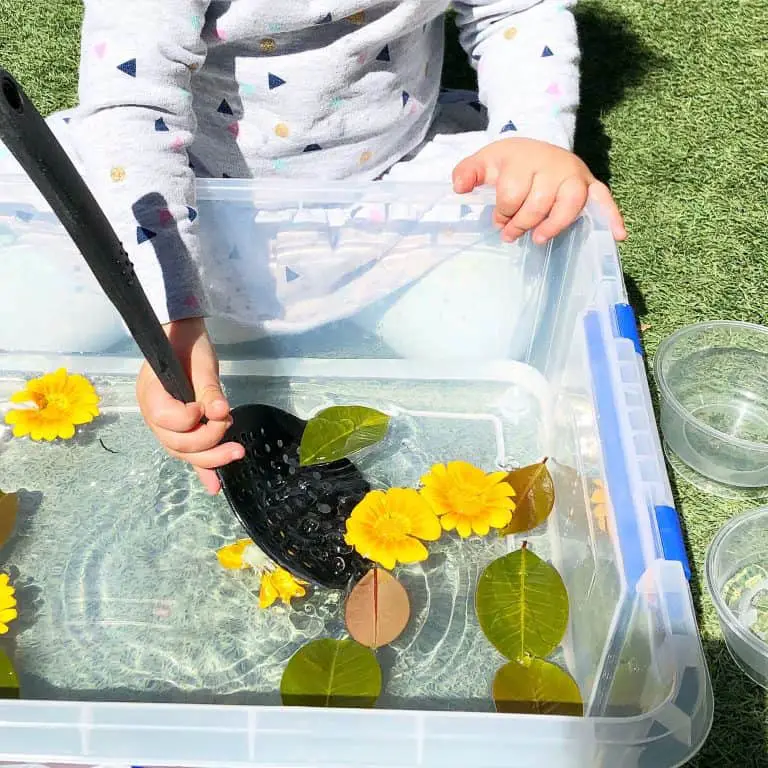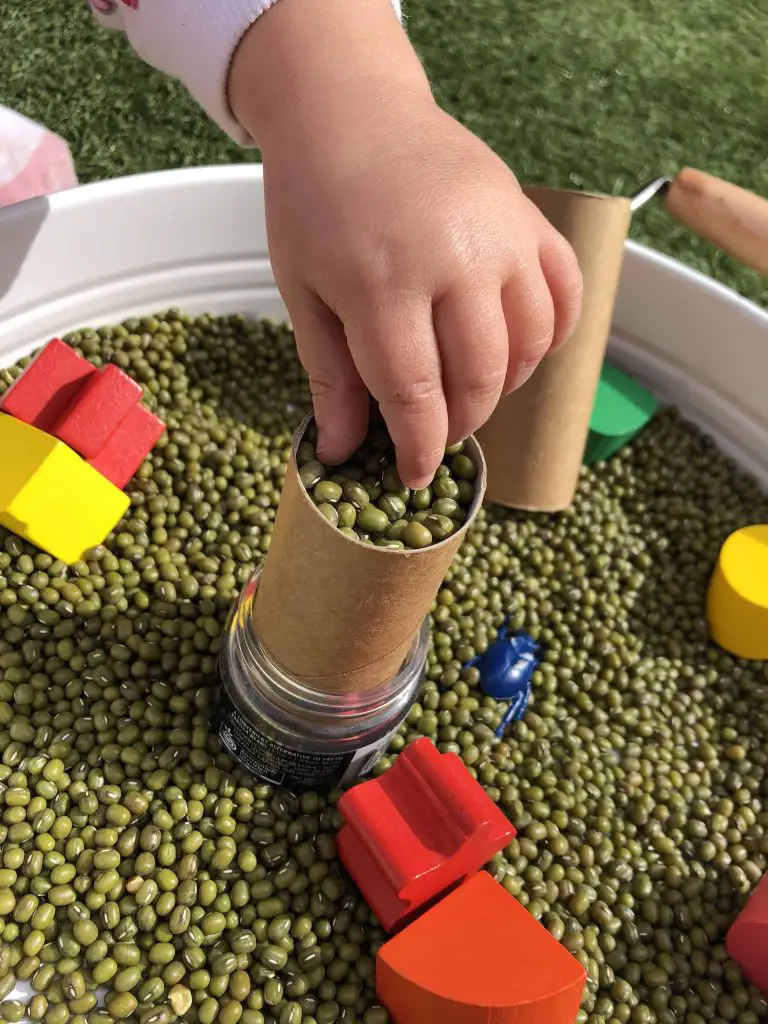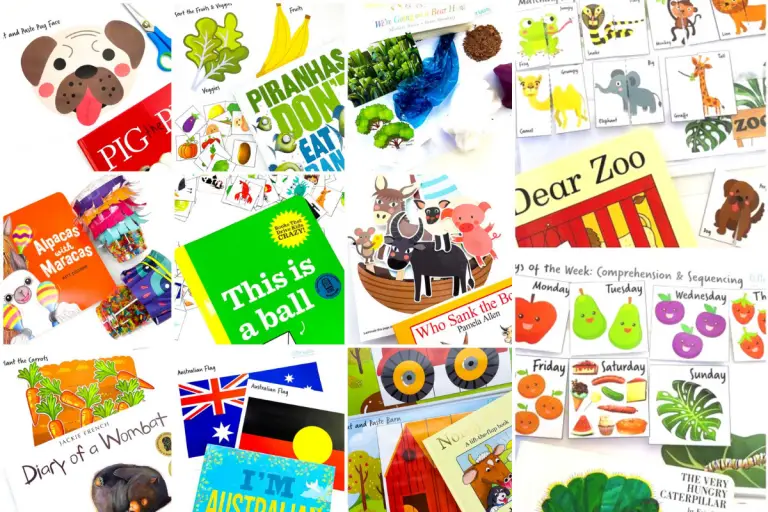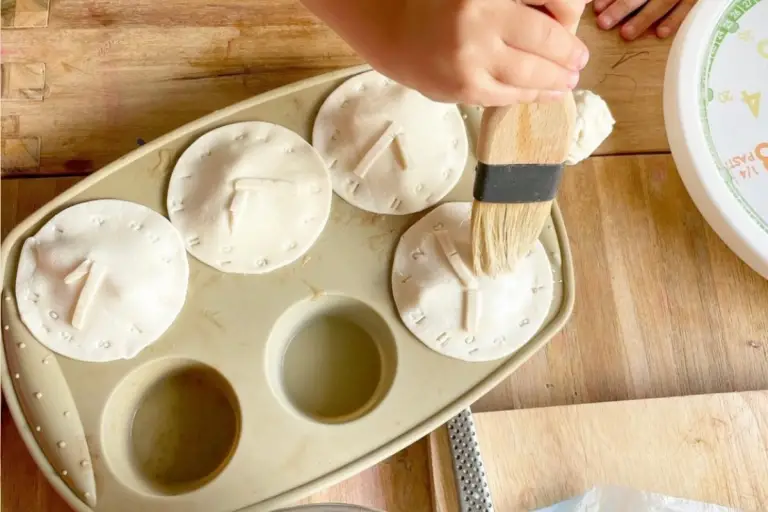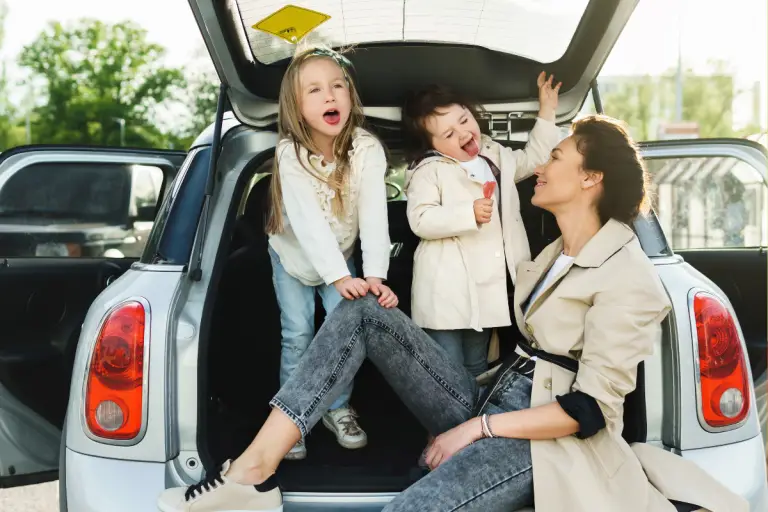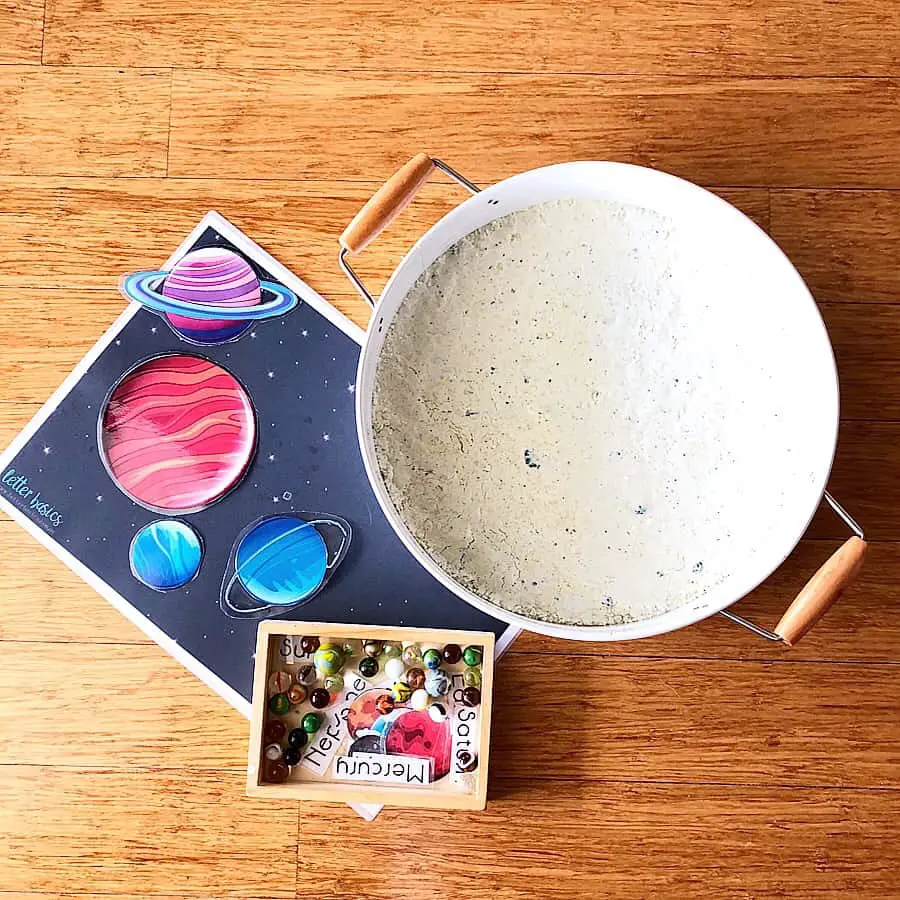Top 47 Educational Activities for 2-year-olds At-Home
Disclosure: This blog contains affiliate links which I may earn a small commission from if you purchase through them, at no extra cost to you.
Hav fun while learning working your way through this list of top 47 educational activities for 2-year-olds.
Feed your child’s natural curiosity and help them develop a love for learning with these inexpensive educational activities.
They are quick and easy to set up and can provide your child with an environment that is going to superior their development.
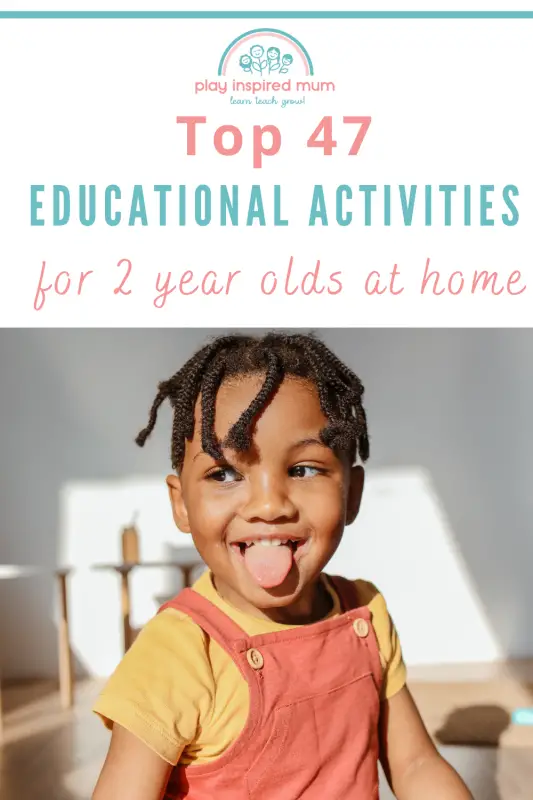
Top 47 Educational Activities for 2-year-olds At-Home
The Joy of Learning at Home
I know first hand how the years when our children are 2-years-old are a whirlwind of growth and discovery.
At this stage, their minds are like sponges, absorbing everything around them.
Engaging in educational activities not only stimulates their brain but also strengthens our bond with them.
Integrating these activities into daily routines at home provides a structured yet flexible environment for toddlers to explore, imagine, and learn.
By presenting learning as a playful and exciting adventure, I help lay a sturdy foundation for lifelong curiosity and a love for learning.
Be it through sorting shapes or finger painting, each activity is an opportunity to teach valuable skills in a way that feels like play.
I know that every moment can turn into a chance to discover new skills while nurturing my little ones’ development in a fully supportive and caring home setting.
Even if you just take a handful of activities from this list, you are exposing your child to new things, offering new ways of using old things, making memories and helping your little one be their very best.
The Importance of Play in Learning
Play transcends mere entertainment for toddlers; I consider it an essential component of young children’s development.
Through the act of playing, 2-year-olds engage multiple senses simultaneously, laying the groundwork for robust cognitive growth.
Sorting shapes, building blocks, and interacting with various textures stimulate neural pathways, fostering critical thinking and problem-solving from a tender age.
More than just words and sounds, language development blossoms as toddlers express their thoughts and comprehend instructions during play.
Activities like repeating new words, singing simple songs, or naming objects advance their vocabulary and grammatical understanding.
This interaction solidifies a foundation for future communication skills that they will build upon with each imaginative dialogue and curious inquiry.
Play facilitates motor skill enhancement as toddlers navigate their environment.
They refine their coordination and balance with activities such as stacking, rolling, or kicking balls.
As they navigate a play obstacle course or scribble with crayons, they unknowingly sharpen their gross and fine motor skills.
These physical activities are not just about movement; they integrate learning by doing, which for toddlers is one of the best ways to grasp new concepts and master developmental milestones.
Move the flash cards aside, replace screen time and get ready to bring much fun into your day.
You can use inexpensive activities that inspire the development of important skills all while playing.
Developing Fine Motor Skills Through Play
We all want to set our little ones on a path of successful growth, and developing fine motor skills plays a foundational role in their journey.
Imagine the delight on your toddler’s face as they grasp tiny pom poms, meticulously sorting them into matching color cups.
This simple activity not only keeps them engaged but also enhances their ability to coordinate small muscle movements, a critical step toward self-reliance.
Grab an egg carton and craft sticks to make a posting activity.
Your next rainy day can be the perfect time to grab empty water bottles and fill them with pasta shells to make maracas and start a band.
Reach for your turkey baster to add to some water play.
I love using kitchen items in play.
The second draw down holds the best things for fine motor and sensory play.
So much so in fact, we had to get more of some kitchen tools for the outdoor activities in the kids mud kitchen.
Thrift or op-shops are great for this!
Posting Activities
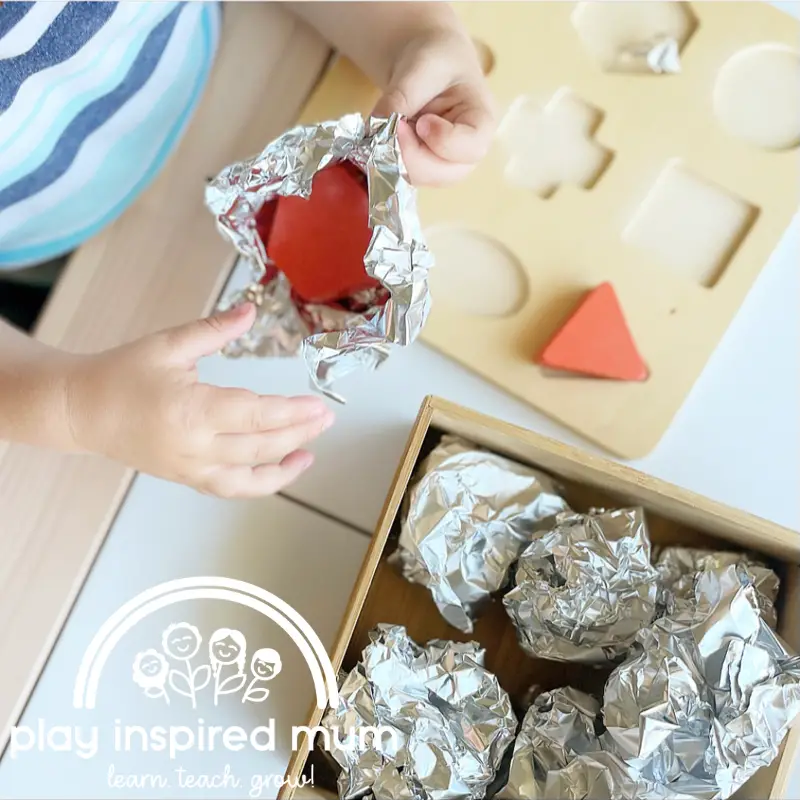
Play Dough
Let’s explore the world of play dough together. Play dough play can contribute so much to a toddler’s development.
When your two-year-old rolls, flattens, or sculpts this pliable material, they’re not just having fun; they’re also strengthening their hand muscles and refining their dexterity.
Such manipulation tasks serve as building blocks for future skills, like holding a pencil or buttoning up a shirt.
Offering a range of tools like plastic scissors, stamps, or cookie cutters can multiply the play dough fun, each tool inviting a new way to mold and shape, thereby stretching their fine motor ability even further.
In these shared moments of creation, we’re not just shaping dough, but also shaping confident learners prepared for the many tasks of growing up.
Play Dough Activities
- Play Dough Patterns
- Dinosaur Footprint Stamping
- Play Dough and Beads
- Play Dough Robots
- Flossing Play Dough
- Fall Invitation to Play with Play Dough
- Play Dough Monsters
Threading
Consider threading beads onto string as another engaging pastime.
As toddlers concentrate on piercing the string through the tiny bead holes, they build precision and hand-eye coordination.
This can be a peaceful yet deeply educational time you share, where you may notice their problem-solving skills emerging as they determine how to correct a flipped bead or untangle their string.
Each little success lays a strong foundation for triumph in larger upcoming challenges.
Other resources that can be used for threading include pasta, cardboard toilet tube rings, leaves, buttons, cotton reels and wooden rings.
For toddlers just starting out, using pipe cleaners for threading makes it easier to navigate.
By incorporating these simple yet effective activities into daily playtime, you’re not just filling time – you’re carefully guiding your child along a path marked by new abilities and the joy of independent achievement.
Threading Activities
Colour Sorting and Matching Games
I find that one of the best ways to introduce toddlers to the concept of colours, other than incidental learning, is through engaging sorting and matching games.
These activities not only teach colours but also aid in developing fine motor skills and the ability to recognize different shapes and sorting by attributes. These are both early numeracy skills.
Let’s explore a few easy activities that you can set up at home.
You can start with a simple colour matching game that involves a muffin tin and a handful of coloured balls or pom poms.
Show your toddler how to place each colored ball into the corresponding section of the muffin tin.
For an extra challenge, use tweezers or a wooden spoon to transfer the balls, which will enhance their hand-eye coordination.
Another creative activity is providing your toddler with various coloured objects and a series of containers or buckets labeled with matching colors.
Ask them to sort the objects into the correct buckets.
If you’re looking for a sensory play twist, mix in objects of different textures and sizes to broaden their sensory experience.
Lastly, don’t overlook the simplicity and educational value of matching socks by colour.
On laundry day, I often turn this routine task into a fun learning activity.
It’s an excellent way for older toddlers to start recognizing different colours and patterns, and they feel proud contributing to household chores.
Through these interactive and educational activities, your toddler will not only have fun but also build a strong foundation for learning new words, different shapes, and essential problem-solving skills.
Colour Sorting Activities
- Gumnut colour sorting
- Colour sorter egg carton
- Duplo colour sorting
- Colour sorting sticky wall
- Pom Pom Colour Sorting
- Apple Colour Sorting Sensory Bag
Enhancing Gross Motor Skills with Movement
I find that integrating movement-based play activities into a toddler’s day is an excellent method to foster their gross motor skills.
An important thing to understand is that toddlers are not designed to sit still.
Toddlers need to run, jump, play, and interact with their environment to build their muscles and coordination, and learn how there bodies fit within an environment.
They thrive with movement.
My middle child craves movement more than the rest.
Even simple things such as shaking her ‘sillies out’ before sitting to have lunch make her body more comfortable and concentrating an easier task.
Gross Motor Activities
Let me share some of my go-to activities for this crucial aspect of their development.
- Balloon Taps: I blow up a few balloons and encourage my little one to keep them in the air with gentle taps. This simple game helps with balance and coordination while being safe and fun.
- Obstacle Course: Setting up a mini obstacle course at home is easier than you might think. Cushions to jump over, a hula hoop to crawl through, and a blanket to roll under can make an adventurous playground for a tireless 2-year-old.
- Dance Party: Music is a fantastic way to get toddlers to move. I turn on some child-friendly tunes and we dance together. Sometimes, I incorporate a ‘freeze’ game where we stop moving when the music pauses, which adds a layer of fun and challenge.
- Animal Walks: We pick out different animals and try to move like them. Hop like a bunny, walk like a bear, or flutter like a butterfly – this imaginative play helps them learn new words, identify body parts and movements. Animal walks are the best for transitions too. Eg, walking to the car or on the way to the bathroom to brush teeth.
- Ball Games: Rolling, throwing, and kicking a ball back and forth is an age-old activity that strengthens muscles and hand-eye coordination. I find it also teaches toddlers about taking turns and sharing.
- Bubble Chase: Chasing and popping bubbles is not only thrilling for toddlers but also encourages them to run, jump, and stretch as they reach for those elusive orbs.
- Simon Says: A game of ‘Simon Says’ is a delightful way to get a toddler moving and listening carefully. I use it to incorporate actions like jumping, spinning, and stomping.
These activities offer not just physical benefits but also heaps of laughter and joy, making learning through play a beautiful journey.
Let’s encourage young ones to move their bodies and explore the limits of what they can do as they grow stronger and more confident by the day.
Discovering Patterns with Creative Crafts
I’ve found that one of the best activities for teaching patterns to 2-year-olds involves crafts.
For instance, making necklaces with beads of different shapes and colours not only hones their fine motor skills but also introduces them to the basic concept of patterns.
You can start by showing them how to create a simple pattern, like red, blue, red, blue, and then let them take the lead.
The tactile experience of handling the beads paired with the visual appeal of the colours makes this a delightful learning activity.
Another fun craft to encourage pattern recognition involves stickers.
Provide your toddler with a variety of sticker shapes and colours, and a piece of paper.
Show them how to arrange the stickers in a sequence, such as star-circle-star-circle, and watch as they replicate the pattern or come up with their own.
This activity not only teaches them about patterns but also allows for creativity and choice.
Laying out colorful paper strips and asking them to arrange these into patterns is yet another easy craft.
They can make alternating patterns, like yellow strip, green strip, yellow strip, or even more complex ones as they advance.
This simple activity offers an engaging way to strengthen cognitive skills through pattern discovery.
These crafts are interactive methods to introduce young minds to the concept of order and sequence, laying a solid foundation for math and observational skills later on.
The key is to keep it playful and allow for exploration, as this is when they learn the most.
Pattern Activities
- Toothpick Patterns
- Lego Patterns
- Nature Patterns
- Popstick Patterns
- Playdough Patterns
- Fingerprint Patterns
Letter Recognition and Early Literacy
I find that engaging young minds in letter recognition and literacy can be both educational and entertaining.
One method I employ involves the use of letter-shaped cookie cutters.
These tools make it easy to introduce the alphabet during snack time or craft projects.
You can press them into play dough or use them with cookie dough to reinforce letters and even spell out simple words.
Press them into paint before stamping them onto a sheet of paper.
Similarly, alphabet mats serve as a colourful playground for toddlers to explore the shapes and sounds of different letters.
They can touch, feel, and visually connect each character, enhancing memory retention.
I sometimes enhance this activity by challenging them to hop from one letter to another, making learning dynamic and physical.
Incidental Learning
Our local library has a huge alphabet play mat. My little one loves doing letter hunts, running from one to the other.
For hands-on learning, I turn to magnetic letters.
I place them on a cookie sheet and let the little ones match letters to those on the titles of their books, or cans of food.
We then moved to their names and having fun with the sounds the letter each represent.
It’s a playful way to boost their understanding of language structure and phonics.
In these ways, I transform the daunting journey of literacy into a series of delightful steps that entertain as they educate.
Learning through everyday play, just little moments that only need be a few minutes add up to greatness.
It’s a gratifying process to watch toddlers grasp new words and take pride in their growing abilities.
The best part is that these fun activities have a huge impact on reading ability well into primary school. You are truly setting up your child to be a successful reader by exploring sounds, and matching them with the letters.
Letter Recognition Activities
- Letter Recognition Flowers
- Sensory Bin Letter Recognition
- Plastic Egg Hunt with letters
- Name Splash Letter Recognition
Sensory Bins for Tactile Learning
I can’t overstate the benefits sensory bins have on a toddler’s tactile learning and language development.
You can create these bins by filling a container with an array of items that intrigue the senses.
Here’s a simple way to assemble a sensory bin that’ll keep your 2-year-old engaged:
- Select a Container: A shallow, plastic storage bin works best. Ensure it’s large enough for your toddler to explore without being too deep.
- Choose a Base Material: Rice, beans, sand, or even water can serve as a foundation. Add food coloring to the base for a dash of visual stimulation if you like.
- Gather Sensory Items: Look for objects of different textures, sizes, and shapes. Think smooth pebbles, fluffy feathers, pom poms, or chunky beads.
- Include Tools for Manipulation: Offer spoons, cups, or tweezers to help your child interact with the materials. These tools aid in fine motor skill refinement while they scoop, pour, and grip.
- Encourage Exploration: Let your child dive in hands-first. Discuss the items they find, and introduce new vocabulary as they describe their sensory experiences.
- Maintain Safety: Keep a watchful eye during play to prevent any small items from becoming a choking hazard.
- Clean Up: Have a quick storage solution ready and involve your toddler in the cleanup process to foster responsibility.
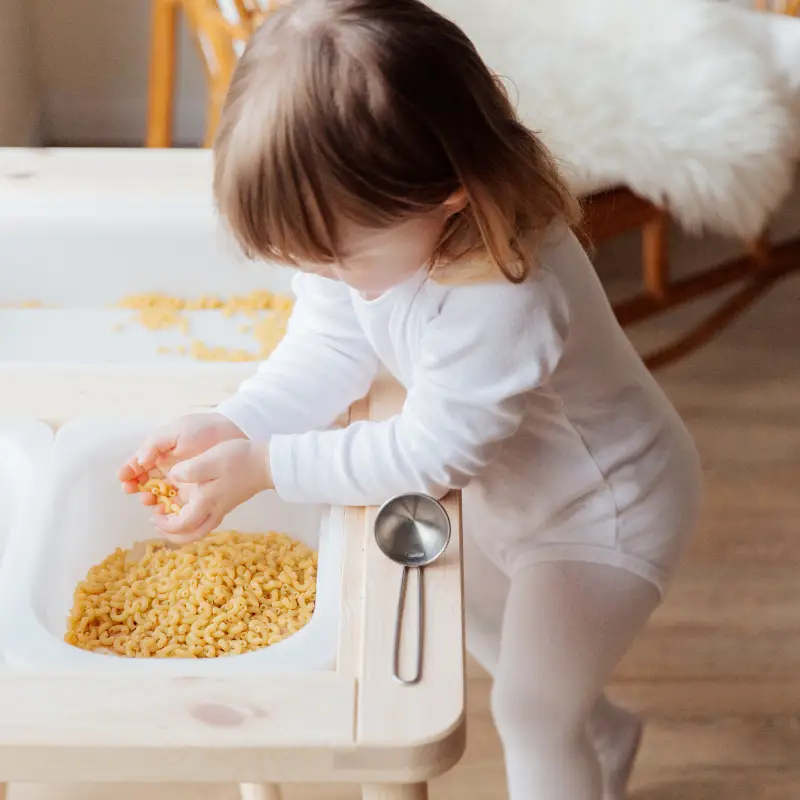
Through sensory bins, toddlers discern the nuances of different objects, learning concepts like soft and hard, big and small, while unconsciously expanding their descriptive language.
Sensory play allows open ended exploration and for little experiments.
Little hands learn what happens when they pour water from their jug into their water table.
They learn to isolate different sounds as they listen to the rustle of bubble wrap.
Such play doesn’t just entertain; it opens doors to a world of sensory education.
We spend so much time exploring sensory play. It can be such an easy activity to set up and present so many learning opportunities.
What to put into your sensory bin
Other sensory play materials can include:
- Ice cubes
- shaved ice
- shaving cream (supervise as not taste safe)
- whipped cream
- yoghurt
- dry corn kernals
- dried chickpeas
- shredded paper
- taste safe sand
- oobleck
- taste safe mud
- taste safe dirt
- leaves
- playdough
- jelly
- polenta
The great thing about sensory play is that you likely have all you need at home right now to set up fun learning activities in no time.
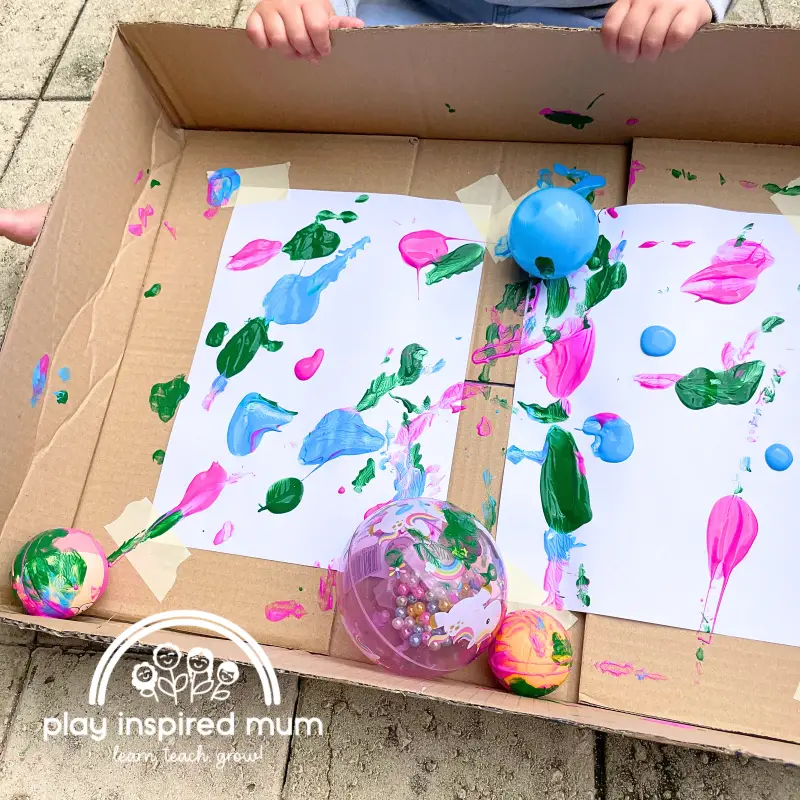
Boosting Problem-Solving Skills
Problem-solving skills are a cornerstone in the developmental journey of a 2-year-old.
We can nurture these skills with activities specifically designed to challenge and engage toddlers in thinking through solutions.
Simple puzzles are a fantastic place to start, as they help to foster critical thinking and reasoning.
With puzzles, I introduce just a few pieces at first, increasing complexity as toddlers become more adept at fitting them together.
As your toddler gets more confident, you can enhance the play by wrapping the pieces in foil or adding them to a sensory bin.
Building blocks also offer countless opportunities for toddlers to experiment and solve problems.
As they stack, balance, and create structures with these blocks, they learn about spatial relationships and cause and effect.
I encourage them to build towers, bridges, and even simple representations of things they see in everyday life to expand their creativity and understanding.
Give your toddler cardboard boxes and let their imaginations take control. Humble cardboard can become almost anything. We have spent the better part of these school holidays creating all sorts of play things with cardboard boxes.
Finally, shape sorters are exemplary in teaching toddlers how to match corresponding items.
These come in various forms, from traditional plastic sorters to homemade alternatives using cardboard and household items.
The act of selecting the correct shape for the proper slot improves not only hand-eye coordination but also problem-solving as kids determine why some pieces fit while others don’t.
Through these activities, young children approach problems with curiosity and develop a sense of persistence.
They learn to trial different solutions, and in doing so, they build confidence in their capability to overcome challenges, which is a crucial aspect of problem-solving.
Pretend Play for Social Development
I find pretend play to be one of the best ways to support a toddler’s social and emotional development.
When children engage in make-believe with dolls, they learn to express themselves and understand the complexities of social interactions.
For instance, I might guide a child to ‘feed’ a doll, which then opens a dialogue about caring and empathy.
By using toy phones, toddlers practice conversational skills.
I often watch in fascination as they mimic my words and tone, learning how to engage in back-and-forth communication.
It’s impressive to see their language skills blossom as they chat away on their pretend calls.
Kitchen sets offer a fantastic arena for pretend play.
I encourage little ones to ‘prepare’ meals, which teaches them about different roles people have and how collaboration works.
Role-playing as a chef or setting the table, children begin to understand teamwork and the importance of contributing to group activities.
This type of play is instrumental in developing social skills.
But it’s not all about interaction with others; it’s also about self-regulation and identifying one’s own emotional states.
As toddlers navigate the pretend scenarios, they face challenges and learn to manage frustrations, which is a key part of emotional growth.
No-Mess Activities for Hassle-Free Fun
I know that keeping things clean with a 2-year-old can be quite the challenge.
That’s why I’m a huge fan of no-mess activities that still offer tons of fun and learning.
I’ve discovered some fantastic ideas that require zero prep and leave no trace behind once playtime is over.
Imagine turning your living room into a mini amusement park with pillow roller coasters.
Stack pillows in a line and let your child’s toys have the thrill of their plushy lives sliding down.
It’s a great sensory experience and teaches them about gravity and incline without any spills or stains.
Next, you must try a zip-lock rescue mission.
Place small toys or foam shapes inside a zip-lock bag, fill it with hair gel or baby oil, and seal it.
Your toddler will be captivated, pressing and squishing to move the items around.
It’s a fantastic way to build fine motor skills and visual tracking, plus you don’t have to worry about tidying up afterward.
Lastly, an ice excavation game is sure to be a hit.
Freeze small toys or baby-safe object in an ice cube tray and give your little one warm water in a squeeze bottle to rescue them.
This activity is a solid choice for introducing scientific concepts like temperature and phase changes, and the only thing that gets wet is a bit of water – easy to clean!
These activities are not only easy to set up and pack away, but they also foster creativity, help with skill development, and are genuinely enjoyable for both you and your child.
So say goodbye to long clean-ups and hello to hassle-free fun that keeps the learning going.
Cultivating Imagination with Storytelling
I find storytelling an incredibly powerful way to spark imagination in 2-year-olds as it invites them into worlds beyond their immediate experiences.
For an engaging learning activity, grab a colourful picture book and read with your little one.
But, don’t just read—make it interactive.
As we turn the pages together, I’ll ask you to pause at the captivating illustrations and encourage your toddler to describe what they see.
Questions like, “What do you think is happening here?” or “What might happen next?” help them think creatively and predict outcomes.
Role-playing takes this interaction a step further.
Hand me a stuffed animal or a puppet to represent a character in the story, and I’ll show you how we can use them to act out scenes.
This not only makes the reading session more dynamic but also deepens your toddler’s understanding of social cues and emotions.
For words or concepts that seem new, I suggest simple explanations or mimicry to convey their meaning.
If a character in the book is jumping, we can both stand up and jump, laughing as we bring the story to life.
Turn reading into a fun activity using elements of drama.
Finally, the book’s finale doesn’t mean the end of learning.
Use open-ended questions to reflect on the story, asking your child how they felt about it, or what they would do if they were in the character’s shoes.
This nurtures empathy and helps them apply the tale to their own world.
With these approaches, you and I empower your 2-year-old to not just hear a story, but to live it, learn from it, and love it.
Outdoor Exploration and Nature Play
I always find that getting outside with toddlers opens up a world of learning opportunities.
Fresh air, sunlight, and the endless curiosities of nature make for a perfect educational playground.
I encourage parents to make the most of their backyard or nearby park to engage 2-year-olds in playful learning.
One activity I often suggest is setting up a nature scavenger hunt.
Together, we create a list of natural items to find, such as a smooth stone, a feather, or a flower of a certain color.
I’ll use pictures or simple words to guide the little ones.
This kind of interactive play helps children observe details and start to understand the diversity of the environment around them.
Sidewalk chalk games, on the other hand, offer both a creative outlet and a learning tool.
We can draw shapes, numbers, or letters on the pavement, turning each into a game.
“Hop to the circle,” or “Find the letter A,” gets them moving and learning simultaneously.
Such activities do more than just burn off energy; they also reinforce recognition of different shapes and characters, a key step towards reading and writing.
We mustn’t forget, sensory play can be amplified outdoors.
I like using water tables or simple containers filled with water.
Adding cups and spoons allows children to pour and splash, a fun way to develop hand-eye coordination.
Mixing in food colouring makes for an exciting lesson on colors as they watch the water change hues with each drop.
This is a great activity that we do time and time again. Free play with coloured water engages so many senses and experimental learning.
All these activities foster a connection with nature while building a foundation for lifelong learning.
Plus, they prove learning can happen anywhere, not just within the confines of four walls.
Play at home curriculums for toddlers
For some parents, playing with their little kids comes organically.
For others it can be useful to have a step by step list of toddler activities at their fingertips.
Call it a play schedule or a recipe for play.
If you would like to add some structure to your day, here are some play curriculums designed for 2-3 year olds that are full of developmental activities to do at home.
Using simple supplies that you likely already have at home, these curriculums are loaded with play ideas including:
- fine motor activities
- fun indoor activities
- craft activities
- social-emotional skills activities
- number recognition activities
- exploring science
- expanding on popular children’s books
One of our favourites include
Creative Ways to Say ‘Well Done!’
As parents and caregivers, acknowledging the achievements of our toddlers can reinforce their love for learning.
It is so valuable to compliment the journey as well as the end result. Highlight how they overcame a problem,and that it was hard but that they can do hard things.
This will encourage your toddler to develop a growth mindset and resilience; both powerful attributes.
Here are some inventing approaches to saying ‘Well done!’ that will not only leave our little ones beaming with pride but also encourage them to keep exploring and mastering new skills.
- Sticker Charts: Set up a colorful chart where you can add stickers for each accomplishment. Children love the visual representation of their progress, and it gives them something to look forward to.
- Applause Celebration: Clap enthusiastically after your child completes an activity successfully. This simple gesture can make them feel like a star.
- Happy Dance: We can do a special dance together to celebrate achievements. It’s fun, energetic, and a great way to express joy.
- Certificate of Achievement: Create homemade certificates to present to your child for their learning milestones. Personalize them with their name and what they did to make it more meaningful.
- Storytime Shoutouts: During storytime, insert your child’s name and accomplishment into the story as one of the heroic deeds. It blends creativity with recognition in an exciting way.
- High Five: A hearty high-five can communicate a job well done instantly and is a tactile way for kids to feel connected and appreciated.
- Show and Tell: Allow your child to showcase their work to other family members, instilling a sense of pride in their efforts.
- Progress Photos: Take pictures of their activities and create a photo album showcasing their learning journey. Later, you can look through it together and reminisce about their growth.
Lavishing our toddlers with praise doesn’t need to be elaborate; sincerity in our celebration of their small steps forward makes a world of difference.
These acts of recognition affirm their capabilities and boost their confidence to take on the next challenge with enthusiasm.
